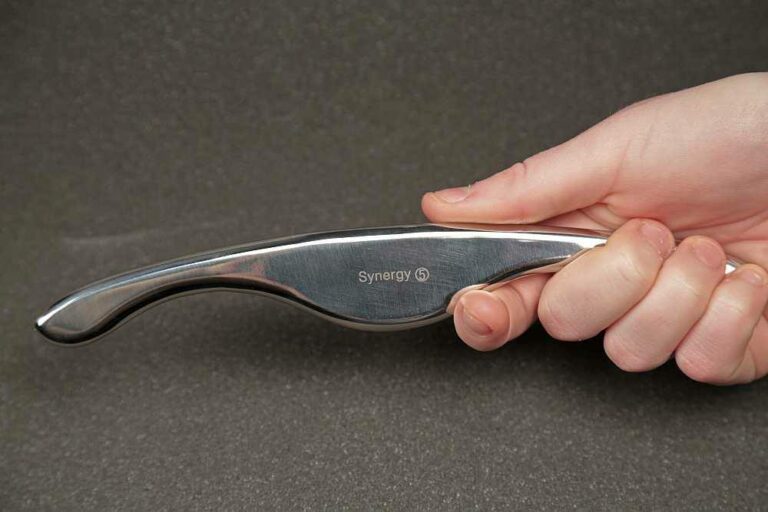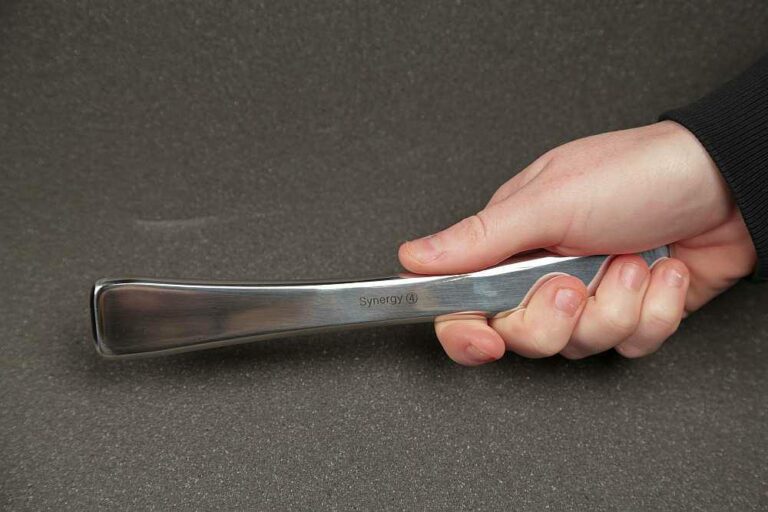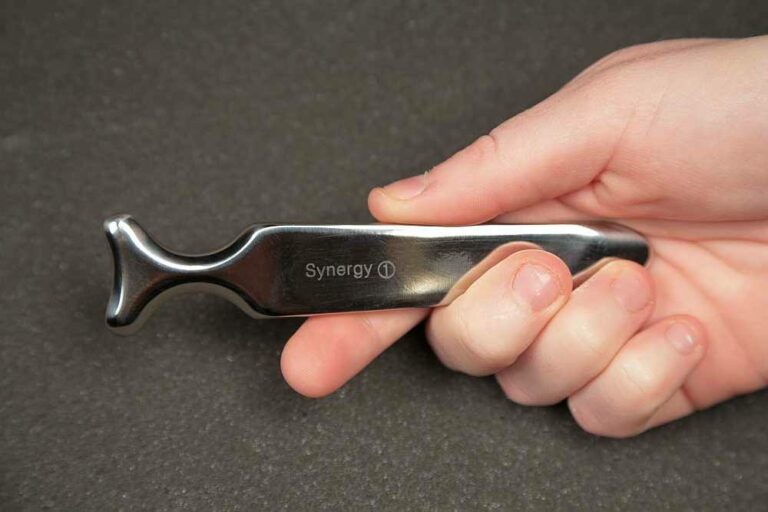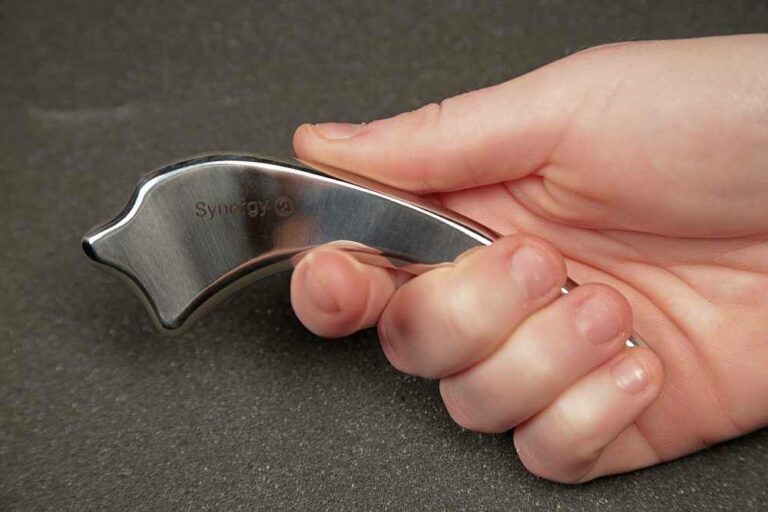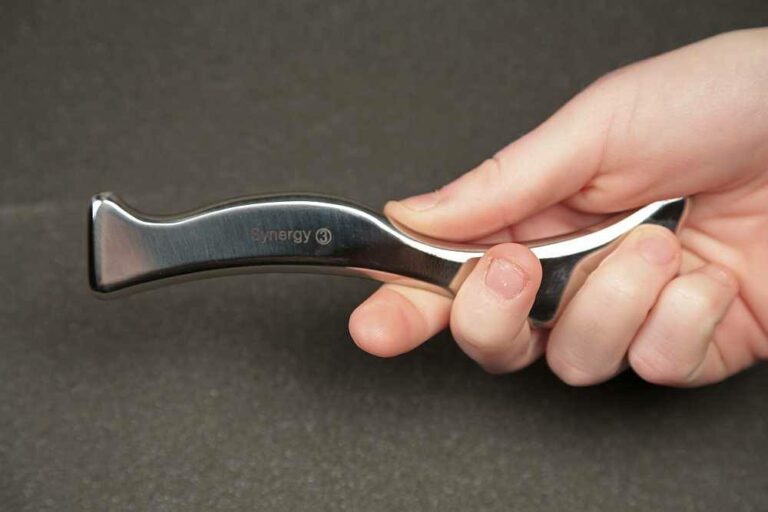IASTM Tools designed to treat myofascial soft tissue restrictions and adhesions caused by acute injury and chronic repetitive strain/sprain conditions.
ATTENTION: Synergy Soft Tissue Tools are currently out of stock. We are experiencing supply chain delays and expect tools to become available in mid-August, 2023. Please check back.
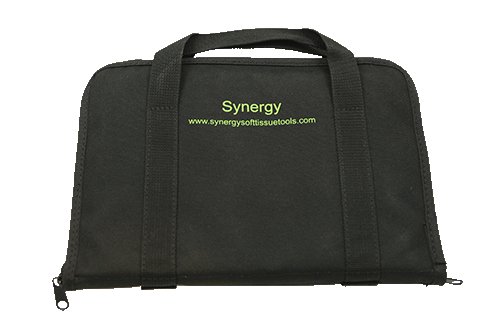
Synergy Soft Tissue Tools
Synergy tools are a set of 5 stainless steel instrument assisted soft tissue mobilization (IASTM) tools that were developed to be the most ergonomic and functional soft tissue tools on the market. Most of all they’re affordable!
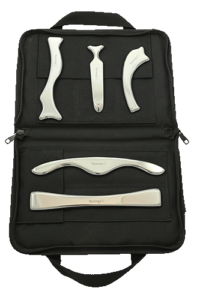
Synergy IASTM Tools will allow you to treat difficult conditions with decreased treatment times and increased effectiveness.
The tools are very affordable and will allow the practitioner to pay for them in a very short time. Why spend thousands on tools that are not as ergonomic and functional? Here are a few of the advantages to clinician and patient:
- Improves diagnostics
- Allows clinicians to isolate and treat areas of fascial restrictions
- Soft tissue fibrosis
- Entrapped nerves
- Increases venous and arterial blood flow to aid in the healing process
- Reduces stress on practitioner hands and joints
- Multiple treatment surfaces on each tool allowing for treatment efficiency
- Double edged for patient comfort allowing for deeper treatment of tissue
- Increases patient satisfaction by ensuring efficacy of treatment
- Aids in the treatment of long standing chronic conditions
- Allows for patient to return to daily activities sooner
Soft Tissue Types
Generally soft tissue is commonly used to describe muscles, tendons, ligaments, and fascia, but there are several other types of soft tissue that can be affected as well. These include the skin, fat, nerve, and blood vessels of the circulatory system.
Fascia
Fascia is the dense membranous connective tissue that encapsulates the entire body just below the skin. This soft tissue acts as support, protection, and feedback to the brain to aid the muscular system with movement. The tissue is inundated with receptors that provide tonal changes to the nervous system which is interpreted by the brain.
Muscles
Ligaments & Tendons
While both are fibrous connective tissues and both aid in movement and stability, tendons allow for the attachment of muscle to bone while ligaments connect bone to bone across the joints. A good example would be in the knee where they both provide support and resistance to forces in all directions while aiding in movement.
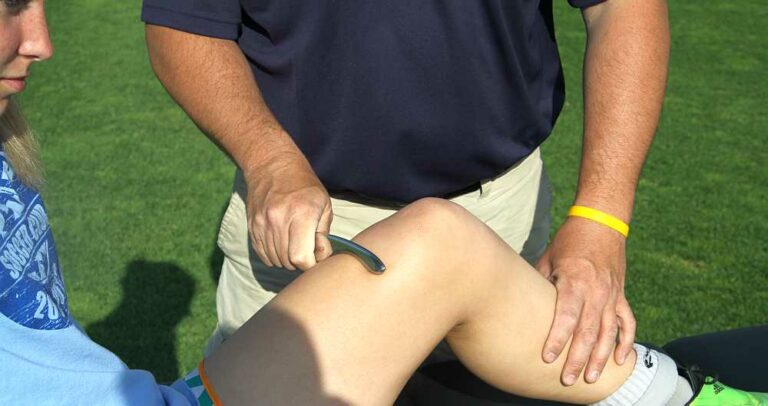
The body is an amazing and complicated system that is breaking down and repairing on a cellular level 24 hours a day.
That’s a good thing right? Yes it is. The issues start when the body tries to repair or adapt after an acute or repetitive stress injury. Our body needs to repair itself the quickest and strongest possible way it can. This repair happens by laying down connective tissue randomly and due to the randomness of the repair it can actually create an area of restriction within the tissues. This area of adhesion/restriction could be several muscle fibers/spindles such as in the case of a mid-thigh quadricep tear creating local restrictions that need to be compensated for globally. This can also take place within the connective sheath of the body the fascial system which is the largest connective tissue in the body and surrounds the systems of the body.
How do adhesion or restrictions affect these soft tissues?
How does this pertain to IASTM and functionality of the body?
A soft tissue injury that involves muscle and fascia. The body will try in every way to heal and compensate by laying down additional collagen fibers in a random pattern trying to pull the affected area together to decrease any further damage and stabilize the tissue.
This laying down of collagen and connective tissue can create adhesions/restrictions by moving into surrounding tissues and can affect movement locally. If the issue becomes large enough locally it can then affect globally by changing or creating compensations within the movement patterns of biomechanical chains.
Areas of restriction can compromise, restrict or entrap nerves, arteries and veins. This makes the tissue fatigue quicker creating weaknesses which can make the tissue more susceptible to re-injury.
If restrictions are not addressed they progress and can create compensations in the biomechanical and fascial chains. Eventually, where the primary restriction may have been can now be felt further from the primary injury or adhesion. This could be in the form of pain or fatigue in a muscle or tissue that can no longer compensate.
Example: A patient with ankle sprains that have to be compensated for by changing gait patterns and increasing the length of time through the gait cycle on the unaffected leg. This can translate to fascial tonal, and neuro muscular changes which can ascend causing back pain. Abnormal sensory inputs perpetuate a dysfunctional cycle of nervous system sensitization, pain and dysfunctional movement/motor output.
When viewed under a microscope, normal tissue can be organized in a couple of different fashions: dense, regular elongated fibers running in the same direction, such as tendons and ligaments; or dense and loose, irregular with fibers running in multiple directions. In either instance, when tissue is damaged, it will often heal in a fibrotic, haphazard manner and may appear radio-dense under diagnostic ultrasound. The tissue may show thickening, irregular organization or less precise margins as compared to non-injured tissues, which results in a restricted range of motion and, very often, pain and functional limitations.
Scar tissue limits range of motion due its negative impact on sensory motor firing rates and frequencies. Abnormal sensory inputs perpetuate a dysfunctional cycle of nervous system sensitization, pain and dysfunctional movement/motor output. GT offers a positive method of manual therapy that interrupts and breaks this cycle of pain and dysfunctional movement.
So Why Synergy Soft Tissue Tools?
The tools were designed to treat more effectively by using a double beveled tool. This will help the doctor or therapist to treat at depth while allowing for longer treatment times and decreasing abrasions to the patient skin.
For doctors, the tools were designed with multiple treatment surfaces. The tools can be used in different areas increasing effectiveness of each treatment.
Multiple surfaces and double bevels are more ergonomic allowing the practitioner to grip the tools without them sliding out of the hands when using emollients. The design will decrease hand, wrist, and forearm fatigue during extended treatment times.
